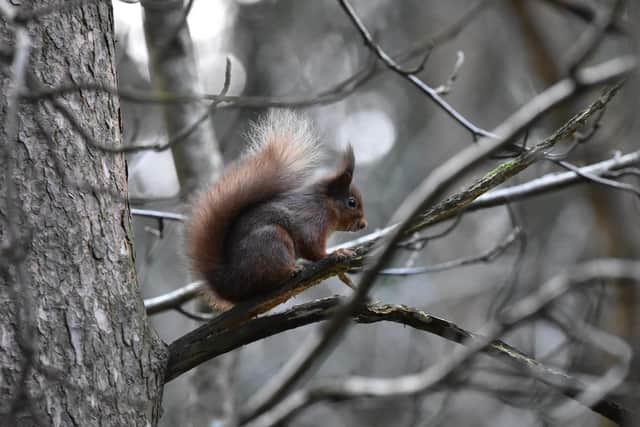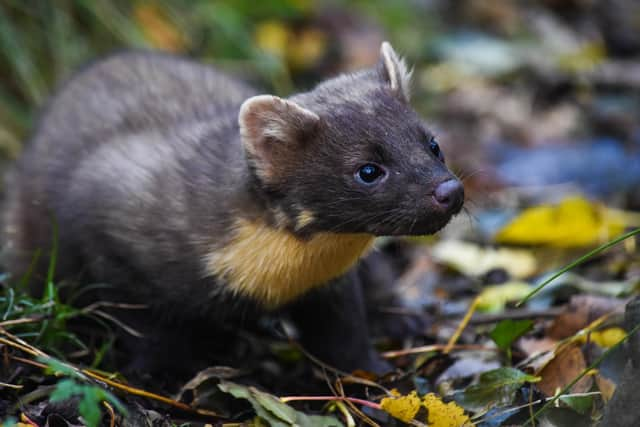Benefits of pine martens for red squirrel survival is reversed in non-native forestry plantations
Previous research has shown that the presence of pine martens in red squirrel territories boosts the species by keeping down numbers of alien grey squirrels, which pose one of the biggest threats to their existence.
New research from Scotland’s University of St Andrews and Northern Ireland’s Queen’s University Belfast suggests the findings hold true in native broadleaf woodlands but the effect is reversed in large plantations of imported conifers.
Advertisement
Hide AdAdvertisement
Hide AdTogether with conservationists and citizen scientists, they used camera traps to survey more than 700 sites across Northern Ireland over a five-year period for red squirrels, grey squirrels and pine martens.


The results show that the presence of pine martens in conifer plantations are likely to have a damaging impact on native squirrel populations.
It’s unclear exactly why this is the case, but it could be due to a lack of alternative prey for pine martens and fewer refuges for red squirrels in highly simplified landscapes.
However, the researchers believe it’s likely linked to the fact that grey squirrels don’t do well in these habitats, and thus red squirrels do not get the benefits from increased numbers of pine martens as they do elsewhere in the landscape.


They have concluded that native predators in native woodlands are key to the success of the native squirrels, casting doubt on conservation strategies that rely on forestry plantations as a nature-based method of boosting the declining species.
Study leader Dr Joshua P Twining, from Queen’s University Belfast, said: “Restoration of native predators is a critical conservation tool to combat the on-going biodiversity crisis, but this must be in conjunction with maintenance and protection of natural, structurally complex habitats.
“This has global implications, given the on-going recovery of predators in certain locations such as mainland Europe.
“It also shows that the current national red squirrel conservation strategies that favour non-native conifer plantations are likely to have the opposite impact to what is intended.
Advertisement
Hide AdAdvertisement
Hide Ad“Timber plantations are often promoted as being beneficial to red squirrel conservation, but our results show that they will have a detrimental effect on the species in the future.”
But conservation teams from the charity Saving Scotland’s Red Squirrels, which is working across the country to help boost populations of the native species, believe forestry plantations have a part to play.
Project manager Dr Mel Tonkin said: “Without the threat from grey squirrels, red squirrels are best suited to a mixed habitat of native conifer and broadleaf woodland, where they can enjoy a varied diet and reap the benefits of greater biodiversity.
“The aim of the Saving Scotland’s Red Squirrels project is to protect Scotland’s core red squirrel populations and help them thrive in as much of their original range as possible.
“The planting of extensive commercial conifer forests in the last century provided a vast additional area of habitat for red squirrels.
“Sitka spruce forests can help red squirrels by providing a refuge when grey squirrel numbers are overwhelming in the wider landscape.
“However, conifer monocultures are not the ideal habitat and should be viewed as a last line of defence if regional grey squirrel control cannot be sustained.”
A message from the Editor:
Thank you for reading this article. We’re more reliant on your support than ever as the shift in consumer habits brought about by coronavirus impacts our advertisers.
If you haven’t already, please consider supporting our trusted, fact-checked journalism by taking out a digital subscription.
Comments
Want to join the conversation? Please or to comment on this article.
